Talking Vulgar
Watch videos with
'The Vulgar' designers
Watch videos with
'The Vulgar' designers
Potent, provocative and sometimes shocking, the word vulgar conjures up strong images, ideas and feelings in us all. In The Vulgar: Fashion Redefined, you are invited to think again about exactly what makes something vulgar and why it is such a sensitive and contested term.
Using psychoanalyst Adam Phillips’ definitions of ‘vulgar’ as a guide, we hear from some of the designers in The Vulgar, including Walter van Beirendonck, Manolo Blahnik, Hussein Chalayan, Stephen Jones, Christian Lacroix and Zandra Rhodes.
“If we always know the vulgar when we see it, how do we know it?...When we think we understand it we still don’t like it. Or if we really enjoy it, we don’t understand quite what we are enjoying.
...We are amused by it, or appalled by it, or enjoy it without giving it a second thought. As though we fear something might happen if we allow ourselves to be interested or curious; as though the vulgar had some dangerous allure...The vulgar is like a blindspot – it has found a way to stop us thinking about it. Just as we don’t really know what it is about a joke that amuses us, we don’t really know what is vulgar about vulgarity.” Adam Phillips
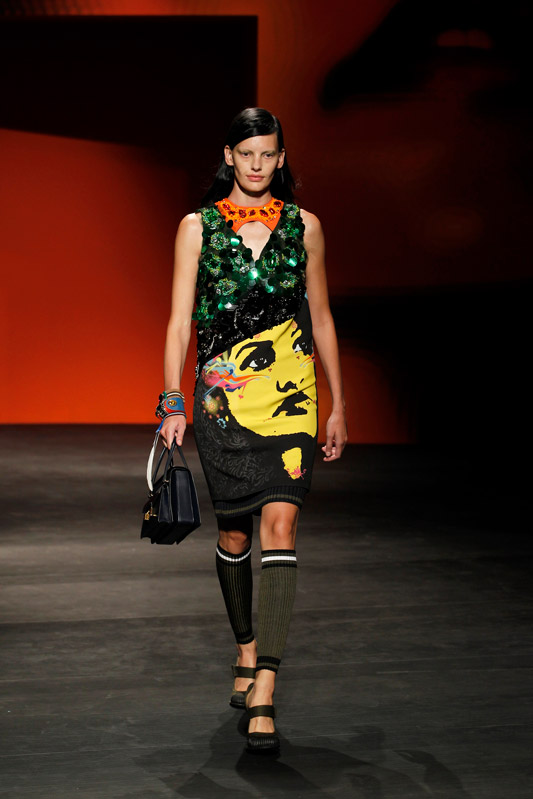
Prada Spring/Summer 2014 Collection
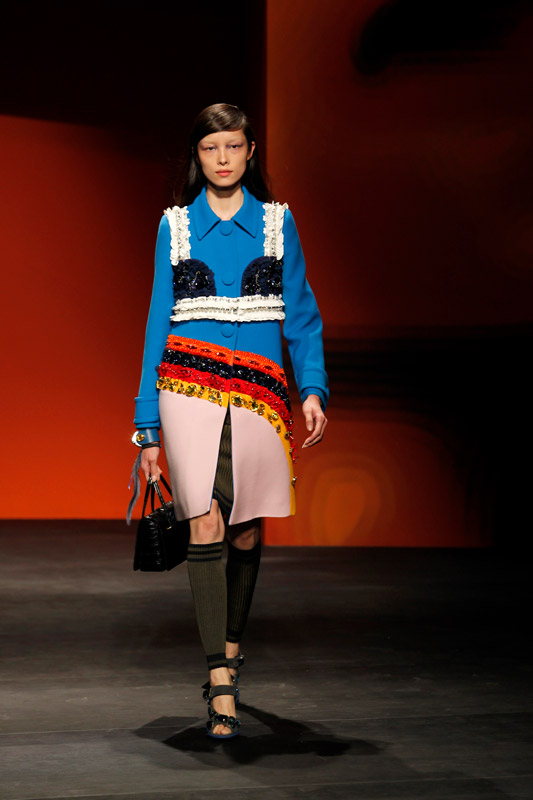
Prada Spring/Summer 2014 Collection
“The vulgar is something we make. Nothing is naturally, or essentially, or in itself, vulgar. Vulgarity, like beauty, is in the eye of the beholder...
The vulgar always make us wonder whether they are having more pleasure than we are. The vulgar are enjoying when they should be admiring. The vulgar are showing off when they should be showing some respect. Perhaps we think of pleasure as vulgar. There are no vulgar fears.
Bodies are transformed into the vulgar through description and adornment: clothing, jewellery and cosmetics. And because it is an art of over-emphasis—playing with scale and proportion and ostentation—the vulgar requires a different kind of attention to detail...Vulgarization is a radical art because it distracts as much as it coerces attention.” Adam Phillips
“In the 16th and 17th centuries, the Bible was translated—vulgarized—into English and other vernacular languages, and could then be understood and spoken about freely. Literate people could read it for themselves. There could be as many understandings of the Bible as there were readers. Access could create anarchy...
In Renaissance Sumptuary Laws, in etiquette books, in dress codes, in fashion magazines, in gossip, vulgar is a term used by the guardians of taste. And the vulgar becomes fashionable when the guardians of taste are in disarray.
Vulgarity is then taste out of order.” Adam Phillips
“Vulgarity is always more of something, never less: it exaggerates; it never understates; it performs; it never retreats. It is committed to enjoyment... It always reminds us of what is missing; it draws attention to what it lacks. It has no other worldly desires. It is a self-cure for the fear of impoverishment. It acts out the scandal of entitlement, the pleasures it represents and the envy it creates. It is the theatre of ambition and kitsch is its celebration. It both fears and courts ridicule. Puritanism is its foil and its target.” Adam Phillips
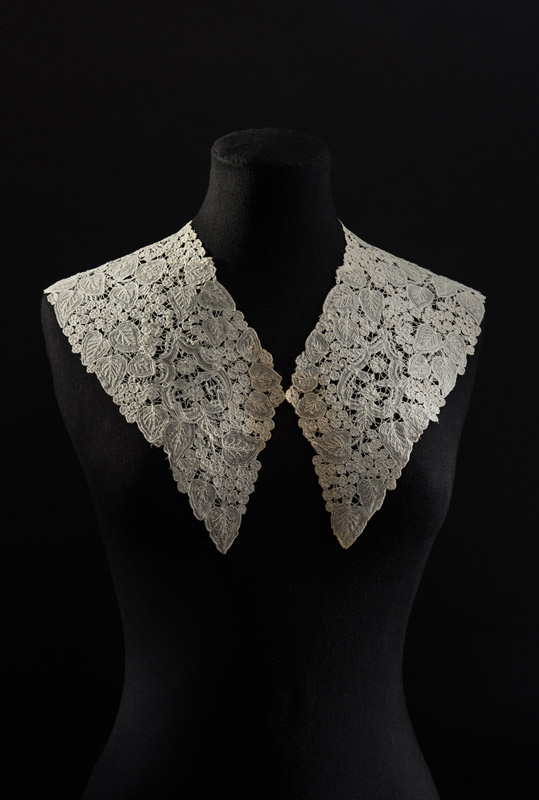
Collar - Cream Linen Argentan Needle Lace, 1740s. Courtesy Fashion Museum Bath
.jpg)
Installation image: John Galliano for Dior, Spring/Summer 2009, and Alexander McQueen for Givenchy, Autumn/Winter 1999 – 2000, The Vulgar: Fashion Refeinded. Barbican Art Gallery.
“The vulgar, like fashion, is always a copy. It invites us to imagine the original and exposes what has been lost in translation. In this way, the vulgar restores our confidence in the purity of the source.
So the only that that interests us about the about the vulgar is what’s wrong with it, because it is pretending to be something that it is not.
Vulgarity is wanting something that you can’t be, or can’t have.” Adam Phillips
“When the word ‘vulgar’ is not used to describe ‘the mob’, ‘the masses’, the ‘common people’, it is used to describe people who are trying to be something that they are not. And because they aspire to something that they feel excluded from, they represent for us the impostor, the con man, the spy, the actor...
The arrivistes, the nouveau riche, the immigrants, the upwardly mobile: all those who aspire to participate, to succeed, to adapt could be accused of vulgarity...
Vulgarity is the ambition that makes a mockery of ambition. It is the aspiration that overexposes what it aspires to.” Adam Phillips
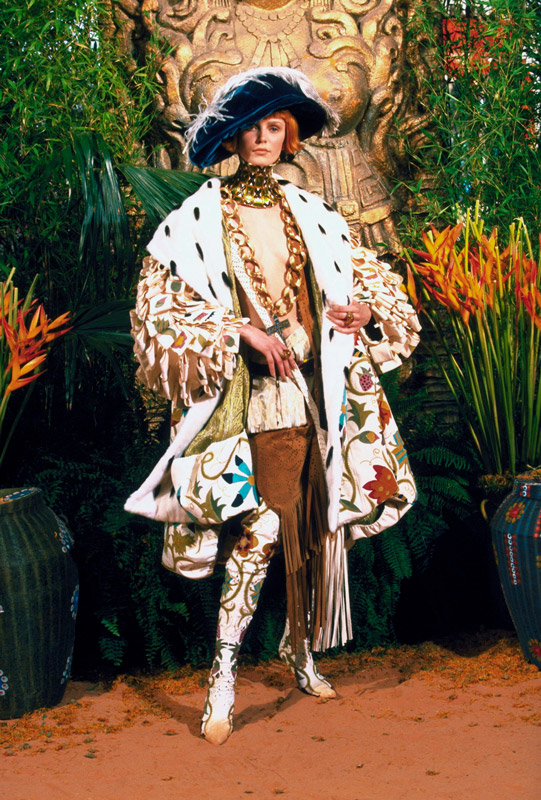
John Galliano for Dior. Autumn/Winter 1998 - 1999 Haute Couture
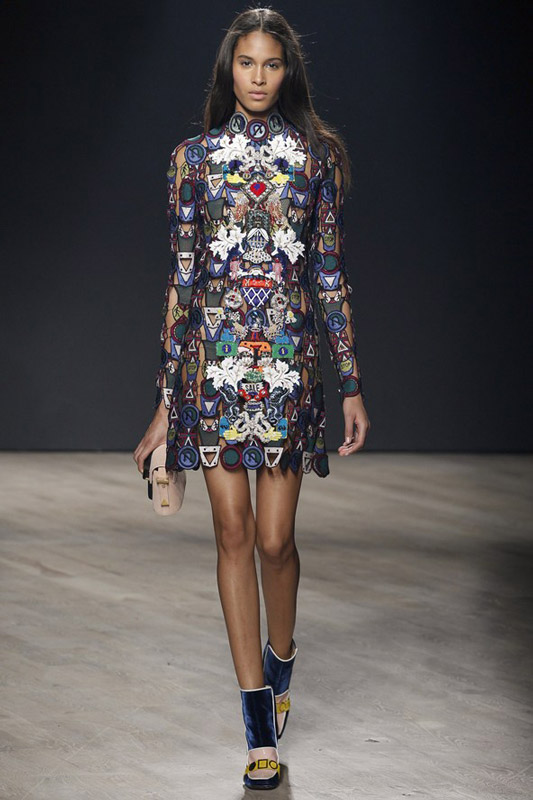
Mary Katrantzou. Autumn/Winter 2014 - 2015 Ready-to-wear. Courtesy Mary Katrantzou
“The vulgar tongue is the common language, the native language, the language ‘we’ speak. It is local and indigenous, like national or traditional dress. So, why would we be suspicious of, or amused by, a language that everyone could speak, and what would we be suspicious of? Vulgarity amuses us because it makes us uneasy...
The vulgar are mean, gross, brash, gauche, tasteless, kitsch, coarse, pretentious, camp, rough, rude, common and so on – and that is how they speak. It is only ever other people who are vulgar...
Everyone has a tongue but not everyone has, or has to have, a vulgar tongue.” Adam Phillips
“As the scapegoat of good taste, the vulgar does a lot of work for us. And like all scapegoats, it must not inspire us. It encodes and carries our disowned pleasures and fears. It represents whatever it is about beauty that we can’t bare. It is the exception we use to prove the rules, the failure we need to insure our success. The vulgar is there to be punished.
...Vulgarity guarantees nothing. The vulgar as an uncompleted action, as an experiment, as a testing of the audience, may be more promising than its many alternatives.” Adam Phillips
“Like ‘too fashionable’, ‘too popular’ means ‘too available’. We are suspicious of people and things that are ‘too popular’, as though ‘too popular’ means ‘too eager to please’, ‘too opportunistic’, ‘too servile’, ‘too hidden’, ‘too cheap’. ‘Too available’ as a sexual definition is always a term of abuse. Anybody or anything that, like money, passes through too many hands, is vulgar.
We want to dissociate ourselves from it. It is degraded and degrading, as though there are too many bodies involved, and bodies are contagious. As though we could lose ourselves in the crowd, and not find anything else we might want. ‘We’ wouldn’t know who ‘we’ are without the vulgar.” Adam Phillips
“In its earliest uses, ‘common’ was distinguished from ‘aristocratic’. It was used to describe the shared, the ordinary and the vulgar. It described the communal within a class system, a contradiction in terms. So it has been all too commonly used as a derogatory term. Vulgarity exploits the difference between the common and what we have in common. It turns the tables. It turns fashion into uniform.” Adam Phillips
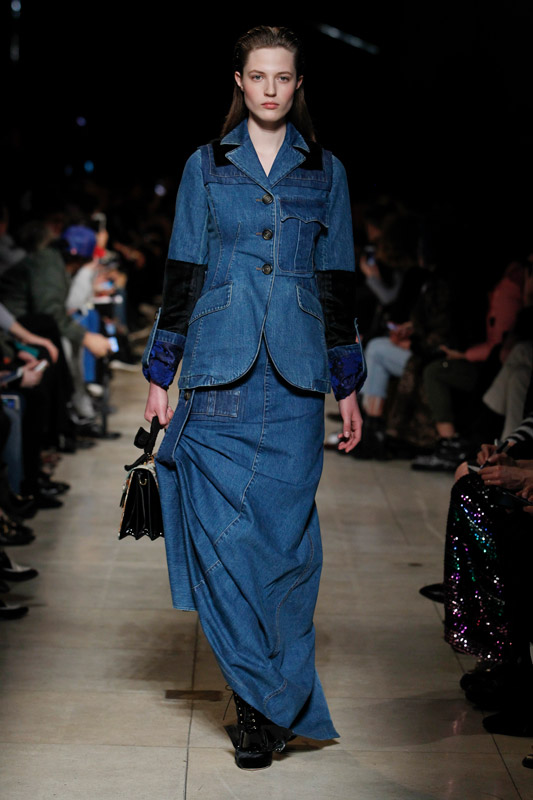
Miu Miu. Autumn/Winter 2016 - 2017 Collection. Courtesy of Miu Miu.
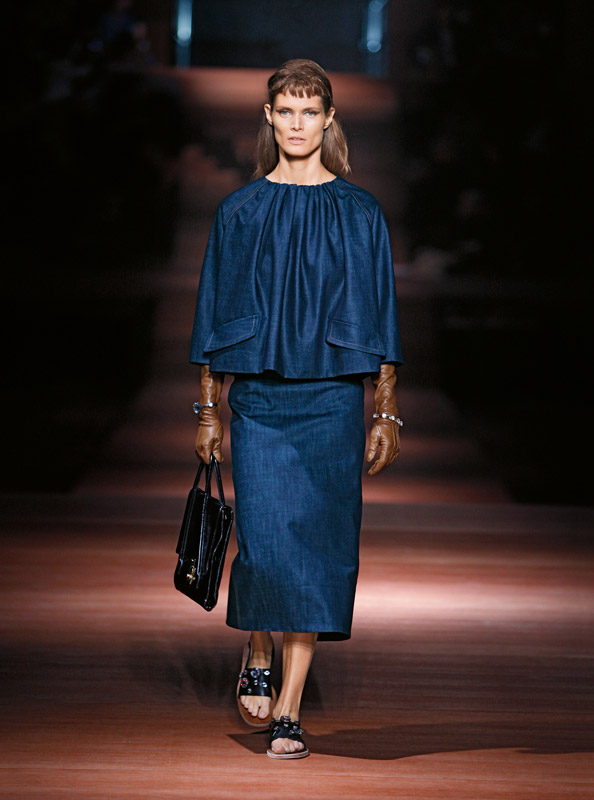
Miu Miu. Autumn/Winter 2013 Collection. Courtesy of Miu Miu.
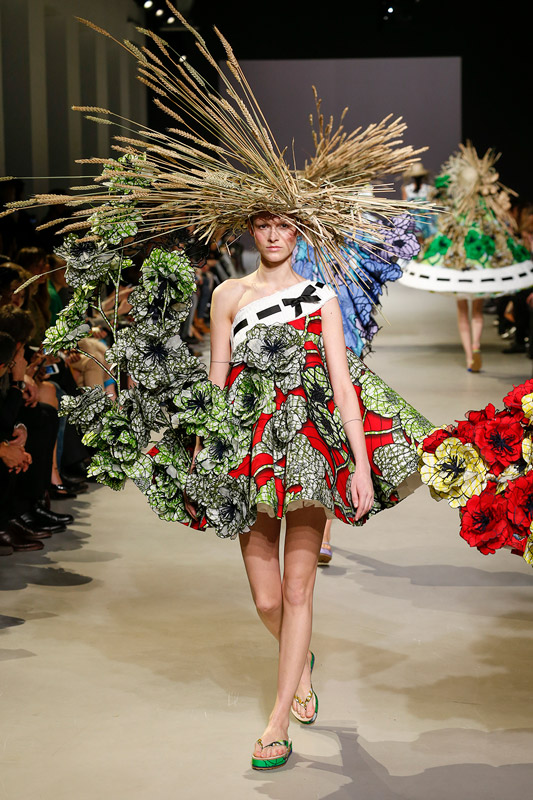
Emma. Viktor&Rolf Haute. Couture Spring/Summer 2015, Van Gogh Girls. Team Peter Stigter
“...the 18th century was an age of luxury… Things, and people, were valued according to their rarity, their exclusiveness. Fashion was for the fashionable, the people of ‘good society’. But as more people acquired more money, they had to work harder to distinguish themselves. Tastes had to become extreme, and good taste had to be over-protected. Fashion had to become extravagant and over-refined. What were pleasures worth, and what kinds of pleasures were actually pleasurable, if they were common?
Vulgarity tends to be something you buy. The vulgar reassures us that the one thing money cannot buy is class. And so it reminds us of our strange fear of being nothing special.” Adam Phillips